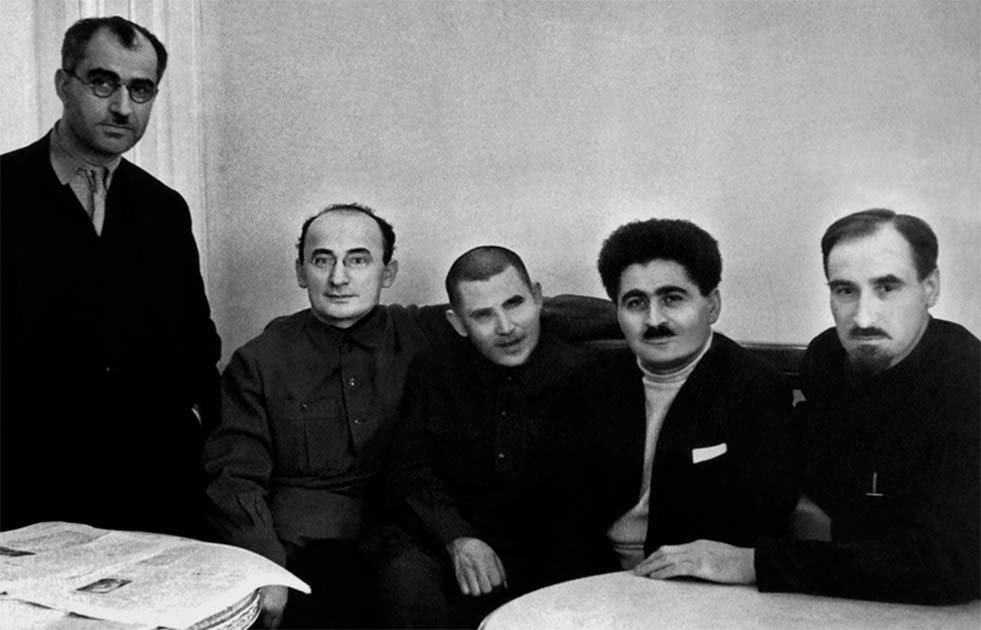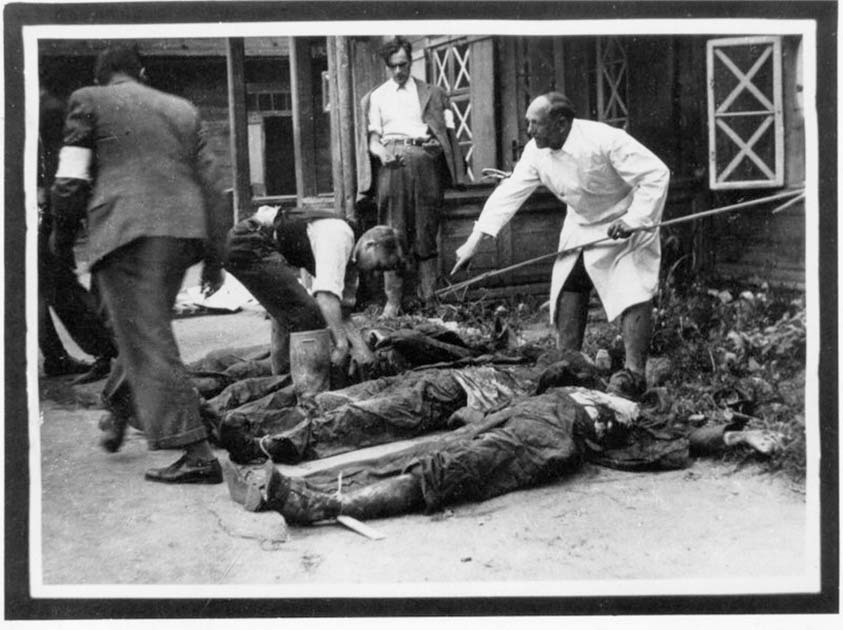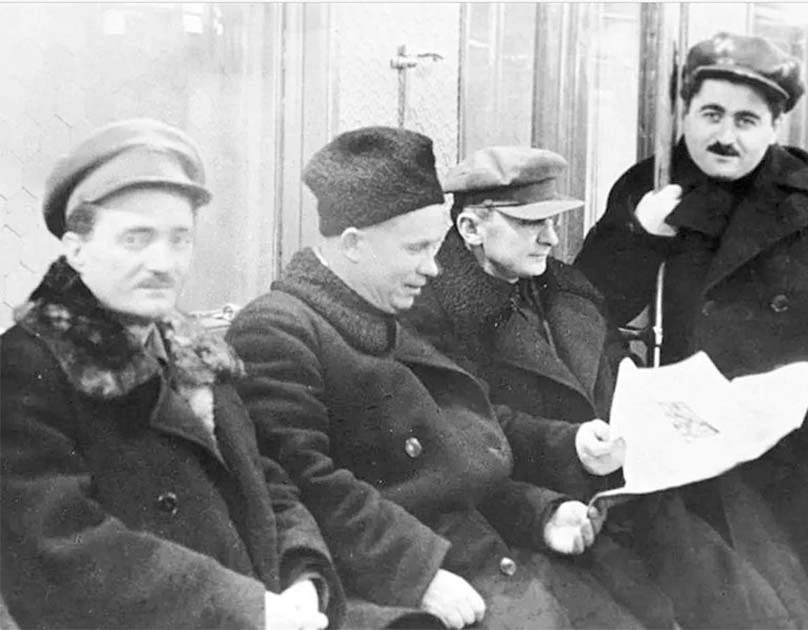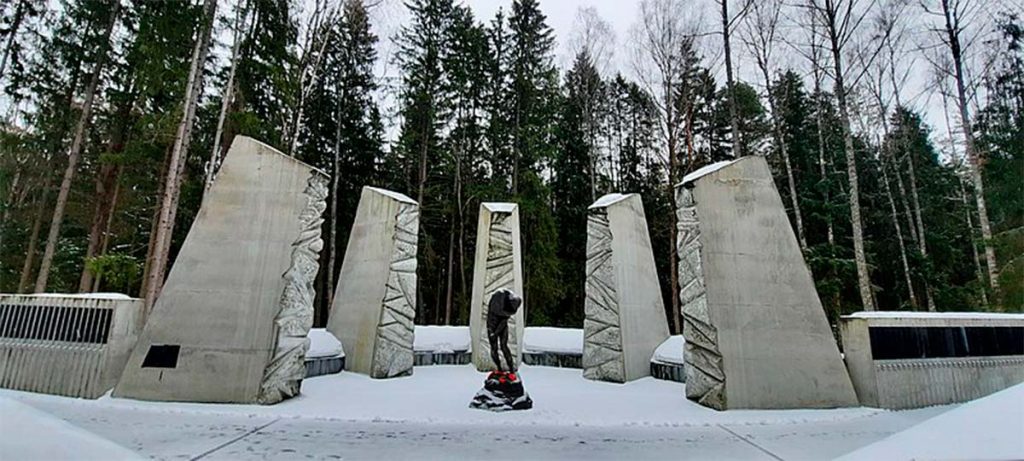During WWII, members of the Nazi party orchestrated horrendous acts of mass murder and inhumane human experiments and would arrest anyone who was against their ideas. Heinrich Himmler was the man behind the Holocaust and is well-known as a monster.
However, what isn’t mentioned is that the Soviet Union did many of the same things the Nazis did. At a conference, Stalin introduced a man named Lavrentiy Beria to President Roosevelt and Winston Churchill as “our Himmler.” The title was certainly accurate, but what did Beria do to earn that nickname?
Lavrentiy Pavlovich Beria and the NKVD
Lavrentiy Pavlovich Beria was born in Mekheuli, Georgia, on March 29, 1899. When he was 20 years old, Beria began working in state security for the Azerbaijan Democratic Republic, and a few years later, he joined the Cheka.
The Cheka was the original Bolshevik secret police, and Georgia at this time was largely controlled by the Mensheviks. In 1924, Beria led the repression of a Georgian nationalist uprising, and as a result of his orders, up to 10,000 people were executed.
The People’s Commissariat for Internal Affairs (Наро́дный комиссариа́т вну́тренних дел), also known as the NKVD was the interior ministry of the Soviet Union. The NKVD was established in 1917 and operated as the police oversaw all prison and labor camps, and developed into a secret police force that was responsible for filling gulags, excessive executions, and deportations.
In August 1938, Joseph Stalin brought Beria to Moscow to serve as the deputy head of the NKVD. At this time, the NKVD was led by Nikolai Yezhov, and what was known as the Great Purge began.
The Great Purge was the forced imprisonment or execution of potentially over one million citizens throughout the Soviet Union from 1936 to 1938. Some victims included political opponents, religious leaders, government officials, Red Army high command, Kulaks, and other “dangerous ethnic minorities.” The Great Purge was so intense that it began to damage the Soviet Union’s political infrastructure, military, and economy. Stalin slowed down the purges in 1938 and replaced Yezhov with Beria.

While Beria was known as a monster, he then did something unexpected. He ordered the release of over 100,000 prisoners from the gulag labor camps, it seemed like things would change for the better under Beria, but that didn’t last long.
In January 1940, Beria sent Stalin a list of 457 people who had been identified as enemies of the people. Beria strongly recommended that 346 of the individuals on the list be assassinated.
Stalin approved the assassinations, and several former NKVD officers were killed along with Yezhov, and his two brothers, journalist Mikhail Koltsov and the author Isaac Babel. While the purges slowed down for two years, they ramped back up again in a horrendous way.
The Katyn Massacre
Following the Gestapo-NKVD Third Conference in 1940, Stalin received a letter that stated all Polish prisoners of war in labor camps and prisons in western Belarus and Ukraine were enemies of the Soviet Union and should be executed. Most of these prisoners were military officers, priests, doctors, and members of the intelligentsia.
The intelligentsia was a social class of university-educated individuals who worked as academics, journalists, teachers, literary writers, and scholars. Stalin approved Beria’s execution plans, and around 22,000 people were executed.
This execution order saw prisoners killed in the Kalini and Kharkiv prisons, but the massacre is known as the Katyn massacre because the bodies were buried in mass graves in the Katyn Forest. For years the Russian government denied that this event happened, and the official party statement was “Polish prisoners-of-war who in 1941 were engaged in construction work west of Smolensk fell into the hands of the German-Fascist hangmen.”
The truth was finally made public by Mikhail Gorbachev, who admitted that the NKVD was responsible in 1990.
Stalin’s Trusted Associate
After the Katyn massacre, Beria carried out a massive purge on the Red Army and NKVD. Well over 500 NKVD agents and 30,000 Red Army officers were executed. The fear of Beria became so intense that commanders in the Red Army used to say individuals who were being purged were “going to have coffee with Beria”. Nobody wanted coffee with Beria.
Beria was put in charge of the Soviet atomic bomb project due to his organizational skills in 1944. He so generously donated thousands of workers from the gulags to do all of the work, including building testing facilities and mining for uranium.
When the Soviet police were restructured into a military system, Beria’s rank was promoted to Marshal of the Soviet Union. As the Marshal of the Soviet Union, Beria met with Kim Il Sung, the future leader and eternal president of North Korea, several times.

Beria recommended that Stalin insert a communist leader in the region while the Soviet-Japanese War (also known as the Liberation War of 1945 to Mongolians) occurred in Pyongyang. Kim Il Sung was Beria’s top recommendation to Stalin. In December 1945, the Soviets installed Kim as the First Secretary of the Northern Korean Branch Bureau of the Korean Communist Party.
In 1946, Beria resigned as the chief of the NKVD, but that didn’t mean he stepped out of politics and national security. He assumed the role of Deputy Prime Minister and Curator of the Organs of State Security.
He continued to order the executions of political enemies and people who pissed Beria off. Stalin loved Beria, and the two Georgians were incredibly close. Anything Beria recommended, Stalin did.
- The Lienz Cossacks: Churchill’s Betrayal and Stalin’s Revenge
- Anna Anderson: Imposter of Duchess Anastasia
But when Stalin died on March 5, 1953, Beria was far from sad about losing his friend. According to historian Simon Sebag Montefiore, when Stalin finally passed, “the rest of Stalin’s inner circle stood sobbing unashamedly over the body. Beria reportedly appeared ‘radiant,’ ‘regenerated,’ and ‘glistening with ill-concealed relish.’” It was clear to everyone that Beria would do whatever he could to become head of the Soviet State.
Not long after Stalin died, his good friend Georgy Malenkov made Beria the First Deputy Premier. Malenkov was the premier (leader) of the Soviet Union after Stalin died; while Malenkov was in command, Beria was the second in command, much to his delight. However, Malenkov did not remain premier for very long, and when Nikita Khrushchev was officially named the new premier in September 1953, Beria’s time was up.
Crimes and Punishment
On June 26, 1953, Khrushchev organized a special meeting, and Georgy Malenkov and Lavrentiy Beria were invited. During the meeting, Khrushchev suddenly burst into a “scathing attack” on Beria and demanded that Beria be arrested.

Beria was confused, and his friend Malenkov did not try to speak in his defense as he was hauled out of the room by Marshal Georgy Zhukov and armed officers on charges of treason. Beria and several of his close associates were tried by a special session (специальное судебное присутствие) of the Supreme Court of the Soviet Union on December 23, 1953. Beria and the others were not granted defense counsel and had no right of appeal; it was obvious what the outcome of the trial would be.
Beria was found guilty of treason, terrorism, and counter-revolutionary activity during the Russian Civil War. It was alleged that Beria maintained personal communication connections with foreign intelligence services and was willing to look the other way and let the Germans occupy the Caucasus.
The charge of terrorism was for his role in leading the purge of the Red Army in 1941, which was classified as an act of terrorism. Beria was then executed under murky circumstances in the hours following the trials.
The executioner’s wife told the press that right before he was shot dead, Beria had “implored him for mercy, groveling on his knees.” Her husband told Beria, “In all that you have done, so loathsome, mean, and nasty, can you not find enough courage in yourself to accept your punishment in silence?” and promptly shot Beria in the head.
Following the execution of Beria, information came to light that he was a serial sexual predator. It wasn’t a big secret, and Stalin, along with other officials in the government, had told their daughters never to accept a ride home or be alone with Beria.

Two of his bodyguards testified that “on warm nights during the war years, Beria was often driven slowly through the streets of Moscow in his limo. He would point out young women to be detained and escorted to his mansion, where wine and a feast awaited them. After dinner, Beria would take the women to his soundproofed office and rape them.”
The bodyguards reported that they were ordered to give the victim a bouquet of flowers when she was leaving Beria’s office, home, or dacha. The implication was that to accept the bouquet made it consensual; refusal would mean arrest. It is unknown how many women were attacked by Beria, and his living family members claim that the allegations are false and the victims who have come forward are lying.
Top Image: Beria with Stalin’s family and Stalin himself in the background. Source: Unknown Author / Public Domain.